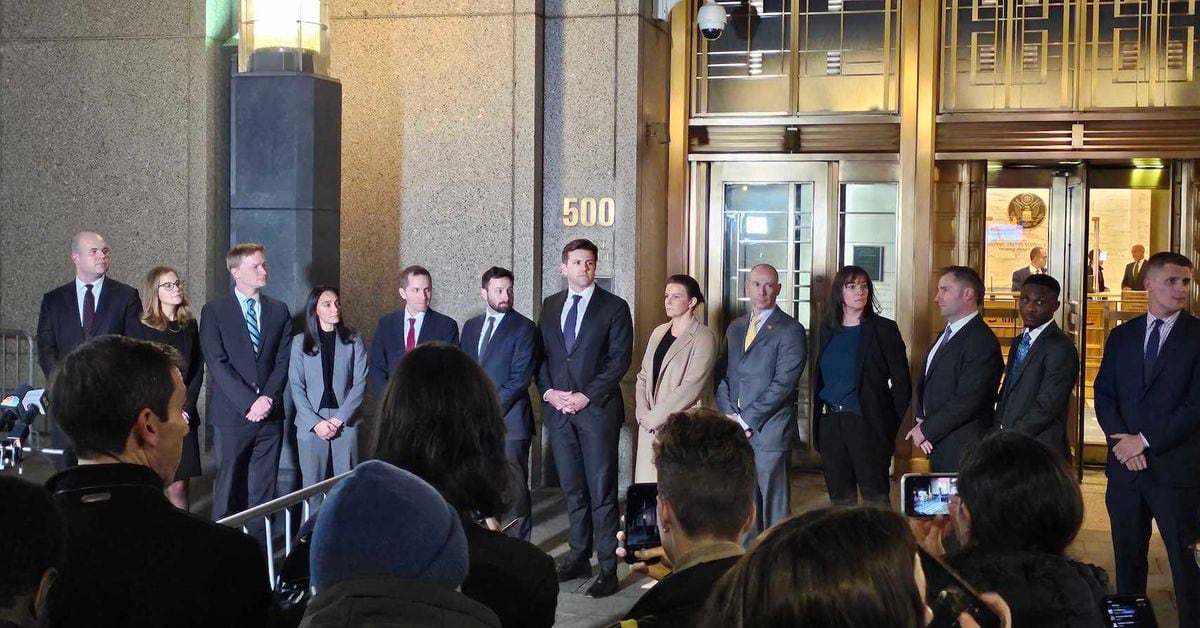Act I
Our hero Josh Brown spends a decade working at a succession of third-tier brokerage firms on Long Island and in New York City. He’s in his early twenties and knows less than nothing about stocks, bonds, mutual funds, investing, the economy, financial advice or anything else germane to the profession. He works for thieves, hustlers, well-meaning know-nothings and the morally compromised, men who will say and sell anything just to make the next mortgage or child support payment. He is convinced there is a way to do the retail brokerage business where everyone wins – client, firm and broker. He is epically mistaken. It is, in fact, the complete opposite: The clients do not win. The firms do not win. The broker does not win. Josh starts to blog about it. All of it. No detail is spared. An audience forms to hear what he has to say each day.
“How can you put this out there?” the other brokers ask.
“How can I not?” comes the reply. Followed by a book. Followed by a newspaper column. Followed by a resignation.
At the end of the first act, our hero leaves the brokerage business, drops his Series 7 and vows to never sell an investment to a client ever again. He has nothing to show for all of that time on The Street, save for a lifetime’s worth of cautionary tales and examples of what not to do. And an ironclad will to make it as an advisor. But he is a joke. The blogging broker. There are no job offers for a 32 year old aspiring financial advisor with approximately zero dollars under management. He has to create his own job from the ground up.
Act II
Josh is not without resources. A wife who believes in him, having known him since high school. A concomitant set of parents-in-law who know what he is capable of if given a chance. An invitation is extended to attend a convention of financial bloggers on Coronado Island. Our hero has to borrow the money for a flight and hotel room. There he meets his idol, the venerable financial blogging powerhouse Barry Ritholtz. Barry has the opposite problem that Josh has: He has hundreds of readers and fans who want to give him money to invest, but he is not a financial advisor. Within a few months, they have teamed up. Josh talks to the clients, Barry oversees the portfolios and The Big Picture. Kris Venne comes to the office to say hello and offers himself a job and then accepts his own offer on the spot. He will handle the financial planning. Michael Batnick pitches himself to Josh on the Long Island Railroad train platform at 11 o’clock at night in a chance encounter. He is a CFA candidate. He will handle the investments.
A band of misfits managing less than $30 million in client assets. A joke that writes itself. “Josh Brown? The Twitter guy? Barry with the blog?” No one with any sense would have bet on them so they had to bet on themselves.
Their firm is launched in September 2013 with roughly $65 million in assets and a single custodian. Their biggest client leaves the week before launch because Goldman is willing to make him a loan he needs for a vacation home. It’s not looking particularly auspicious. They step off the cliff together. Colleagues wish them well. Eyes roll behind their backs.
Barry is handling the real estate sublease, the payroll software and price-shopping for copy machines. Josh is licking envelopes and creating logos. Kris is wearing the human resources hat, the chief of compliance hat, the administrative assistant hat and, with whatever time there is left over, doing the financial planning for all of the accounts. Michael is starting a blog of his own, building portfolios, taking client calls about every topic under the sun, meeting with asset management firms and shipping out physical copies of all the performance reports. Everyone does a little of everything, almost none of which any of them are actually qualified for.
They begin to hire and get extraordinarily lucky. Amazing people begin to join the firm and bring their experience and enthusiasm to the table. It’s still a joke but a joke that is starting to take itself seriously. The New York Times sends a reporter to write about how such a small firm is able to exist in an industry that thrives on scale. The firm goes from four people to five, five to six, six to fifteen. Fifteen to thirty. Fans of the firm’s content become prospects and prospects become clients. Advisors who are fans become employees, bringing their own clients with them. The firm’s content improves and moves from blog posts to podcasts, podcasts to videos, videos to full-blown shows and live events. The fan base explodes. The client base follows suit.
Here at the end of the second act, ten years after his firm’s founding, its assets under management approach $3 billion with over 50 employees and thousands of client households. The firm grew organically without raising outside capital (none was offered) or paying signing bonuses or making acquisitions or hiring headhunters. Bootstrapped. The clients came aboard for the same reason as the advisors and content creators who joined: The culture. It’s a rocket ship and, improbably, Josh from nowhere who knew nothing is somehow the CEO of it. He created his own job. The joke isn’t so funny anymore.
Interlude
At the beginning of every year, my partners and I sit down to review what went well during the prior year and what went poorly. We look at the highlights and the lowlights, discuss areas for potential improvement and strategize about the year to come. This exercise requires a lot of data and analytics covering every aspect of the business. But of all these data sets that are collected, only one can accurately depict how a firm is truly doing in the eyes of its clients: Referrals.
Most successful businesses measure themselves using a Net Promoter Score, which is obtained using survey questions among existing customers about how likely they are to suggest your product or service to a friend. Customers’ responses rank them as being in one of three buckets: A Detractor, a Passive or a Promoter. Your company’s score is based on counting up the promoters and then subtracting a value for the amount of detractors. What you’re left with is your NPS. The scale is minus-100 to 100. A score above 20 is considered good enough and a score above 50 is considered to be amazing. Having a high Net Promoter Score is nice, but surveys are just talk. Actual referrals are action.
This January, we took a look at the new assets we raised during the course of 2022. It was one of the hardest years for the financial advice industry of all time with both stocks and bonds crashing. So what did our clients think about the job we’d been doing? Last year, according to our own internal data culled from the custodians we work with, we raised over $515 million in new money. Of that total, over $63 million came through referrals – new clients who had been brought to us by our existing clients. In any given year, markets can go up, down or sideways. We have no control over it. But what we can control is the service we’re offering and the help we’re delivering. It’s the only thing we have any power over. It’s how we want to be judged. Inbound assets from referrals have been remarkably consistent for us over the last five years in a world that is anything but: $48 million in 2018, $50 million in 2019, $60 million in 2020, $72 million in 2021. Market values of portfolios will fluctuate as they come in during up markets and down, but because this is outside of our control, we have to think in terms of our own consistency and let the chips fall where they may.
And so if you ask me what I am most focused on as the CEO of the firm, it’s referrals. This doesn’t fully capture every aspect of the myriad things we are doing each day, but it mostly certainly can act as a distillation of all of it. We celebrate our new client wins as every firm does, but the referred new client wins just hit different.
I spent the first half of my career at firms that were un-referrable. We made 500 dials a day as cold-callers because the “senior brokers” and firm leadership didn’t give a flying fuck if their clients were happy. Turnover was the status quo, hence all the dialing. When I quit, I swore that I would spend the rest of my career building the opposite. We’re not done and there is always room for improvement. This is what I watch for to tell me how I’m doing.
Now back to the story.
Act III
At the beginning of the third act, Josh finds himself at a crossroads. He has professionalized the management of his firm, having hired and promoted senior level people to every department: Compliance, Trading, Human Resources, Research and Portfolio Management, Financial Planning, Operations, Client Service. He even hired himself a president to help oversee it all.
His children are now teenagers, with the oldest one currently looking at colleges. He drives by the little league fields and catches a glimpse of the next generation of dad-coaches through the chainlink fence. That part is over for him now. His daughter will be driving in a week. His son is starting high school this fall. He has more time on his hands now, but to do what with? Maybe get into better shape. Maybe not. We’ll see.
His employees and executives are running their respective races each day with a shared mission to bring on more clients and to turn them all into net promoters of our practice. He has created shareholders out of more than a dozen employees so far, creating a culture of ownership and accountability. Everyone is pulling in the same direction and the snowball is starting to roll downhill. This is a business of “cumulative advantage” and, lord knows, we’ve definitely killed ourselves doing the ‘cumulating all these years.
And so now, the question for Josh becomes “What next?” He doesn’t know. But if he gets to do what he wants, it’s more writing, speaking, mentoring, meeting people, networking and being creative. It’s more entertaining while educating. It’s more building and innovating and taking calculated risks (and, yes, even the losing that sometimes comes along with that). It’s fighting the same fight for investors everywhere but with bigger guns and more powerful allies. If this is how the third act should go, he will be grateful.
This weekend is his 46th birthday. It’s official – he has hit his late forties. Lots to lose. Plenty of people depending on him. Higher stakes. Larger playing field. A lifetime of mistakes in the rearview with plenty of new mistakes yet to be made. And hopefully, enough time left to enjoy it all.
The joke who started out as a nobody from nowhere has now grown up. And if they’re still laughing, let ’em laugh while they can. As nine-time Grammy Award winner Brandi Carlile sings “I have been to the movies, I’ve seen how it ends. And the joke’s on them.”
circa summer 2006
















